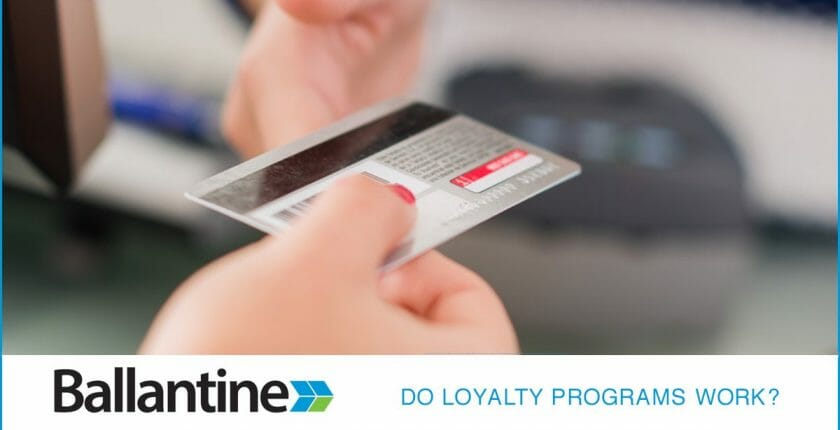What is a Customer Loyalty Program?
A customer loyalty program is a program that offers rewards and incentives to those who frequent specific businesses. This program can give customers access to new products, sales coupons and free merchandise. By providing their personal information to the company, customers typically receive an ID or membership card that is to be used when making purchases.
Loyalty programs serve two purposes: they reward customers for brand loyalty and they give the company a large amount of consumer information. Establishing a loyalty program is also a great method for adapting a marketing plan because the company can see what kinds of products people buy together and which coupons are more effective than others.
Facts About Customer Loyalty Programs:
- There is a definite benefit for most companies when it comes to spending money on loyalty programs. It is estimated that 75 percent of companies that have loyalty programs will generate a return on investment.
- According to Experian, the lifetime value of each customer is tracked by 69 percent of U.S. companies. The average value is $1,803.
- Sixty-four percent of U.S. companies think that the data collection associated with loyalty programs needs to be improved. Fifty-six percent say that they need a better customer sign-up method, and fifty-three percent wanted more personalization within their program.
- According to a study from EarthLink, customer loyalty increases with 28 percent of retailers that install in-store WiFi.
- According to a study from KiteWheel, 25 percent of customers are frustrated when a company doesn’t recognize that they’re a past or current customer.
- This same KiteWheel study also found that 73 percent of customers think that loyalty programs should be a way for brands to show how loyal they are to them, but 66 percent of marketing executives think the programs should be a way for customers to show how loyal they are to different businesses.
- People are participating more in loyalty programs. There are 2.6 billion loyalty program members in the U.S., according to a Harris Interactive Poll for Transera. This means that each person has about 11 loyalty program memberships. This number also shows that these programs are being used. Memberships increased by 26.7 percent between 2012 and 2014.
- People are willing to give personal information for a deal. A webinar by Loyalty360 noted that 67 percent of U.S. adults would give companies access to personal information in exchange for better service or products.
- Twenty-five percent of U.S. adults said their overall customer experience improved over the course of the last 12 months because they offered up personal information.
Do They Really Work?
You may need to overcome some challenges, but loyalty programs can work. The success of a loyalty program really depends on the incentives and services provided to customers. Programs can easily become obsolete if they do not offer much to the customers. The following are a few things to keep in mind for 2016, including turning perceived disadvantages into advantages.
Many loyalty programs can offer retailers advantages that are not understood:
- Even your best members can be better. For instance, with a supermarket, their most loyal customers only spends 50 to 70 percent of their monthly budget at that place. You’re
better off directing budgets toward those existing customers instead of acquiring new customers. You will get a higher return on investment. - A program can work by cloaking prices from competitors. Many loyalty programs send special offers to targeted shoppers via smartphones. These personalized promotions are attractive to consumers.
- If you can improve the customer’s experience, your loyalty program will work. You need to act in the customer’s best interest in mind, rather than solely focusing on signing people up for the program.
How to Have a Successful Customer Loyalty Program:
- Combine loyalty with the full experience. A great example is Starbucks, who has a strongly differentiated loyalty program. This company integrated payments and mobile technology. This makes shopping more enjoyable for the consumer.
- Use the data collected. Target REDcard is a great example. Customers save 5 percent at the point of the sale. They also use the data to target those consumers with the highest value.
- Build partnerships to gain insight into more data to generate more customers.
- Solve industry and customer pain points. A great example of this is Amazon. With a yearly fee for Amazon Prime, you get free two-day shipping and digital content. It is estimated that these members spend over four times as much as non-members.
- Show how much more value there is above cost. You have to clearly show them what they’re getting.
- Target the most profitable customers. You need to know what your market is and target to those individuals in order for your loyalty program to be successful.
Loyalty programs can be an important marketing tool as long as they are planned out and targeted well. You need to keep your customers in mind throughout the entire process in order to be successful. The program has to be about what your customers want. If it is, you will be successful.
To learn how we can help with your next project, contact us.
I'm the Director of Digital Services and Partner at Ballantine, a family-owned and operated direct mail & digital marketing company based in New Jersey. and started in 1966 by my great uncle!





